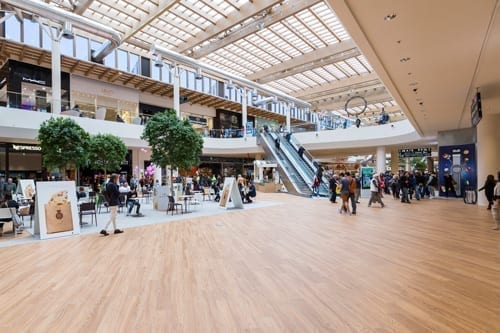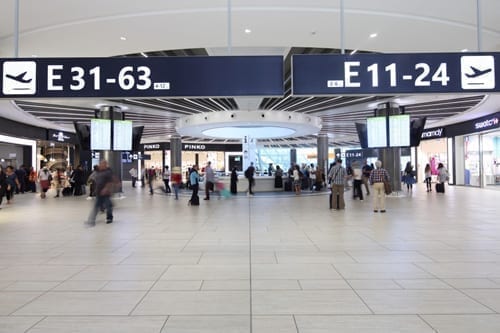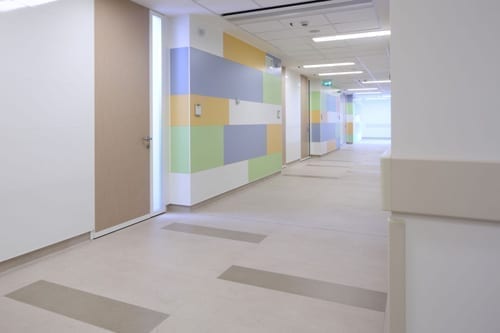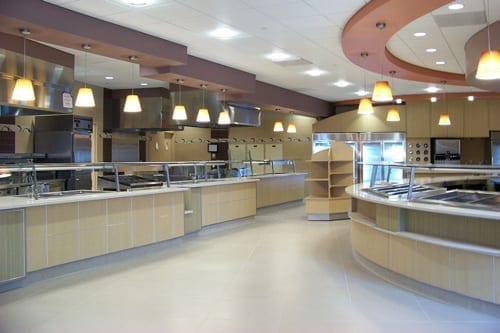Technical


Ceramic tiling must withstand a variety of stresses | by Livio Salvadori
To make a proper, informed choice of ceramic tiles, it is first necessary to perform an in-depth analysis of the place of installation and the conditions the tiling will be exposed to during use. After this, the type of tile with the most appropriate technical and aesthetic characteristics can be selected.
The conditions of use are determined by the stresses that typically occur in the place of installation and which the tiles will consequently have to withstand during their lifetime.
These stresses can be divided into the following categories: mechanical stresses which act on the tiled floor or wall, either through the entire thickness or only on the surface; chemical stresses that occur when various kinds of chemicals intentionally or accidentally come into contact with the surface or underlying layers; hygrothermal stresses caused by exposure of the tiled surface to specific conditions of temperature and humidity.
The fact that the stresses are classified in the same way as the technical and performance characteristics of the various kinds of tiles makes it simpler to choose the right products for a specific application.
The various contexts and consequently conditions of use of the tiled surface can be classified according to the foreseeable levels of the various types of stresses (from very high to very low). This analysis can be performed qualitatively according to a few basic criteria: orientation of the tiled surface, either horizontal (floors) or vertical (walls); interior or exterior location of the tiled surface; function and intensity of use of the building or space (private or public, civil or industrial); further characteristics and specific conditions of the location.
In the case of ceramic floor tiling the most significant stresses are mechanical, making it important to choose the layout and size of the tiles in relation to loading capacity. But for ceramic wall tiling, the strength of the bond between the tile and the substrate is a critical factor.
Exterior applications such as pavings and façade claddings are likely to be subjected to high hygrothermal stresses, so further information about the climate of the area of installation may be useful (weathering agents, intense sunlight, frost, extreme temperature variations, prolonged contact with water, high humidity, etc.).
Interior spaces may also experience severe hygrothermal stresses, as in the case of cold storage rooms (which are often tiled) and rooms typically exposed to a lot of steam and prolonged contact with water (swimming pools, spas, bathrooms, laundries, industrial buildings, etc.).
High-traffic public spaces (meeting rooms, shops, churches, etc.) and areas where trolleys or other vehicles are used (supermarkets, shopping centres, transit areas, stations and airports) experience very high levels of mechanical stress, especially surface stresses. These spaces are also subjected to high levels of chemical stress due to frequent contact with aggressive substances, while the need for rapid and effective sanitisation often results in the adoption of intense chemical and mechanical cleaning methods.
In places such as hospitals, schools, restaurant kitchens and canteens, hygiene is a crucial factor, and the need for thorough cleaning tends to increase the level of chemical stress.
Further safety requirements typical of spaces used by large numbers of people must also be considered, including the risk of falling (floors must therefore have suitable levels of slip resistance), fire and the presence of static electricity.
Industrial spaces are generally subjected to very high levels of stress of all kinds, although the intensities of the specific stress components will vary according to the type of manufacturing activity.
Rooms in private homes are also exposed to different levels of stress according to their specific use. For example, bedroom and bathroom floors are subjected to very low surface mechanical stresses, whereas much higher levels are observed in the case of entrances, corridors and stairways, where the central areas in particular are subjected to the highest foot traffic and therefore stress. Entrance floors may experience anything from medium-low to very high stresses depending on their conditions of use and the type of home (a flat in an apartment block, a house with direct access from the garden, a main residence, a holiday home, etc.). Kitchens on the other hand are exposed to high levels of surface mechanical and chemical stress. Certain areas are subjected to particularly high foot traffic (the cooking area and the area in front of the sink and fridge) and the greater exposure to dirt means that frequent, vigorous cleaning will be required. Kitchen wall tiles are likewise subjected to very high chemical stresses caused by contact with foodstuffs, the effects of cooking and the use of cleaning products.
May 2019







